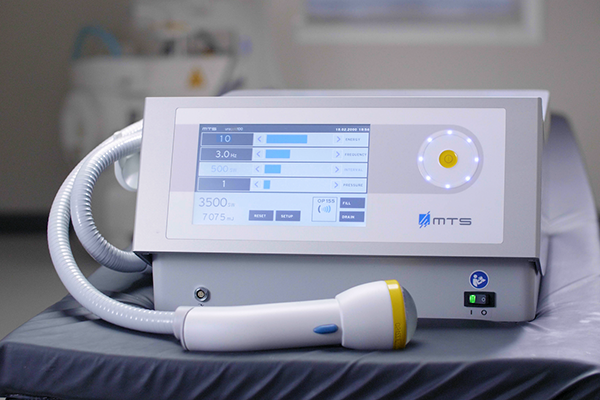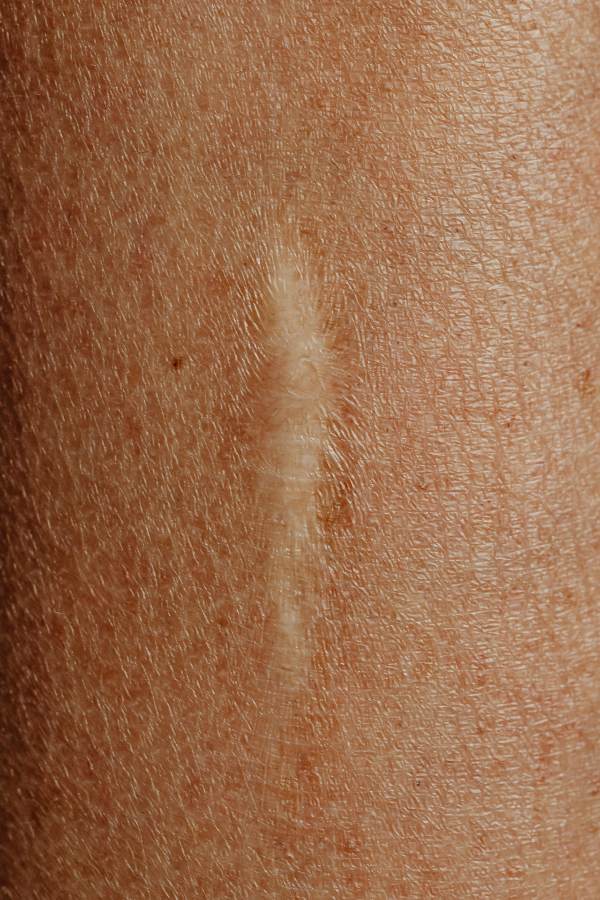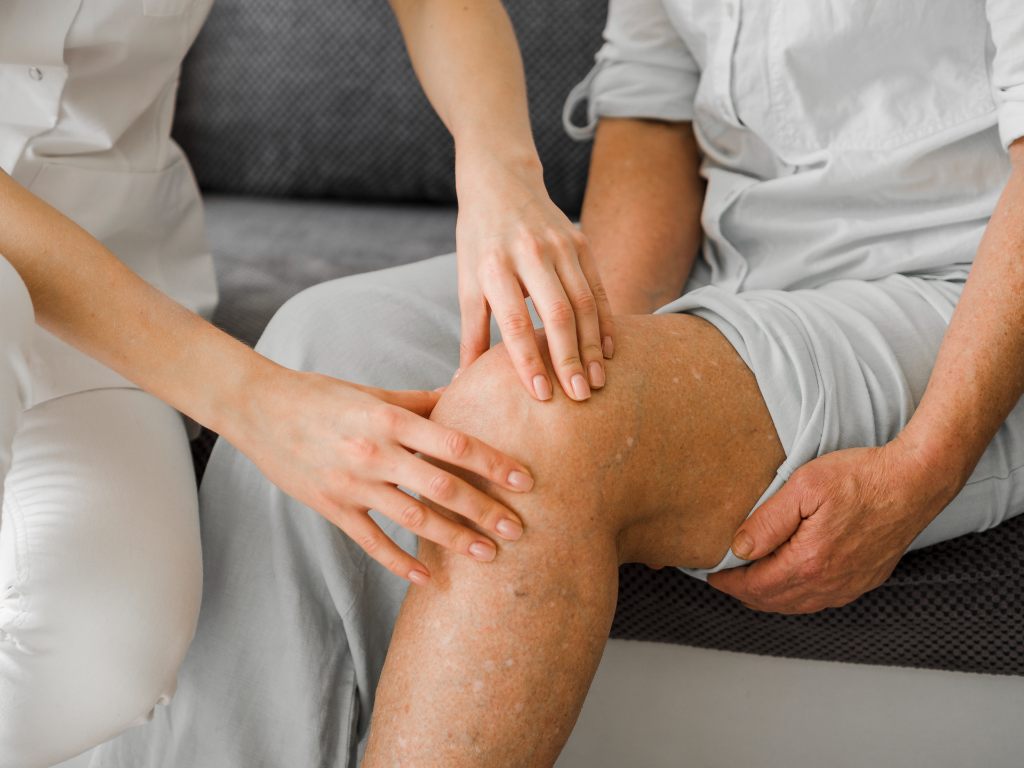Living with hip pain can make everyday activities like walking, climbing stairs, or even sitting for extended periods uncomfortable. If you’ve been told that surgery is your only option, it’s understandable to feel apprehensive. While hip surgery is a common recommendation for severe cases, it’s not the only path to relief. Fortunately, advancements in medical treatments have introduced non-invasive and effective alternatives to hip surgery that can provide relief and improve your quality of life.
Hip Pain Causes and Symptoms

Hip pain can stem from various conditions, each affecting your daily life differently. Osteoarthritis, for instance, involves the gradual wear and tear of the joint cartilage, leading to stiffness and discomfort. Bursitis causes inflammation of the fluid-filled sacs that cushion the hip joint, resulting in sharp pain during movement. Tendonitis, the inflammation of tendons around the hip, often results from overuse and leads to discomfort during activities.
Symptoms can vary but often include:
- Persistent pain in the hip or groin area.
- Stiffness, especially after periods of inactivity.
- Reduced range of motion.
- Discomfort during weight-bearing activities.
Recognizing these symptoms early, understanding their underlying causes, and seeking appropriate care can guide you toward effective treatment options, prevent further deterioration, and improve outcomes.
What Is Hip Surgery and When Is It Recommended?
Hip replacement surgery involves removing the damaged parts of the hip joint and replacing them with artificial components typically made of metal, ceramic, or hard plastic. This procedure aims to relieve pain and improve function in individuals whose hip joints have been severely damaged, often due to conditions like osteoarthritis, rheumatoid arthritis, or injuries.
The artificial joint, or prosthesis, is designed to mimic the natural movement of a healthy hip, allowing for improved mobility and reduced discomfort. For many, this surgery becomes a consideration when other treatments have not provided sufficient relief and daily activities are significantly impacted by hip pain.
Why Consider Alternatives to Hip Surgery?
Hip surgery is often seen as a last resort when other options have been exhausted. However, many individuals explore non-surgical alternatives to manage hip pain, improve function, and avoid the risks and long recovery times associated with surgery.
Many individuals seek alternatives due to concerns about:
- Surgical Risks and Potential Complications: These can include infections, blood clots, and the potential need for revision surgeries in the future.
- Extended Recovery Periods: Hip surgery recovery can be extensive, often requiring months of rehabilitation and physical therapy.
- Personal or Medical Reasons That Make Surgery Less Viable: Certain health conditions, such as heart disease or diabetes, can increase surgical risks. Personal responsibilities or previous negative experiences may make non-invasive alternatives more appealing.
Advancements in medical treatments have introduced non-invasive therapies that can effectively manage hip pain, improve function, and delay or even eliminate the need for surgery.
Top Non-Invasive Alternatives to Hip Surgery
Exploring non-invasive treatments can offer you effective relief from hip pain. These alternatives focus on reducing inflammation, improving mobility, and enhancing overall joint function. Here are some effective alternatives to consider:
1. SoftWave Therapy
SoftWave Therapy utilizes broad-focused shockwaves to stimulate the body’s natural healing processes at the cellular level. This treatment can reduce inflammation and alleviate pain associated with various hip conditions by promoting increased blood flow and tissue regeneration, leading to pain relief and improved mobility.
SoftWave Therapy is FDA-cleared and has been integrated into treatment protocols by various healthcare providers for its role in tissue regeneration. Patients experience significant improvements in hip mobility and a decrease in discomfort after undergoing this non-invasive procedure.
For more detailed information on how this therapy can help with hip pain, read Alleviating Hip Pain with Shockwave Therapy.
2. Physical Therapy
Physical therapy offers a structured approach to managing hip pain through targeted exercises. By focusing on strengthening the muscles surrounding the hip joint, improving flexibility, and enhancing balance, physical therapy can help reduce strain on the joint and alleviate pain.
A licensed physical therapist can develop a personalized treatment plan tailored to your specific needs and limitations. Consistent participation in therapy sessions can lead to improved joint function and may delay or even prevent the need for surgical intervention.
3. Steroid Injections
Corticosteroid injections are commonly used to provide temporary relief from hip pain by reducing inflammation within the joint. These injections can be particularly beneficial for individuals experiencing flare-ups or acute pain episodes.
While effective in the short term, repeated use of steroid injections may lead to potential side effects, including joint damage over time. Therefore, they are typically recommended as part of a broader treatment strategy rather than a standalone solution.
4. Pain Medications
Over-the-counter and prescription pain medications can play a role in managing hip pain, especially during the initial stages of discomfort. Nonsteroidal anti-inflammatory drugs (NSAIDs) can help reduce inflammation and alleviate pain, making daily activities more manageable.
However, relying solely on medications without addressing the underlying cause of the pain may not provide long-term relief. Additionally, prolonged use of certain pain relievers can lead to side effects, emphasizing the importance of medical supervision and a comprehensive treatment plan.
Find Hip Pain Relief with Non-Invasive Alternatives

Hip pain doesn’t always necessitate surgery. With the array of non-invasive treatments available today, you have the opportunity to explore options that align with your preferences and health goals. Among these, SoftWave Therapy for hip pain stands out for its regenerative approach and positive patient outcomes.
Consulting with healthcare professionals can provide clarity on the most suitable treatment path, ensuring that decisions are informed and tailored to your needs. Embracing these alternatives can pave the way to improved mobility and a better quality of life without the challenges associated with surgical procedures.
The Best Shockwave Therapy for Hip Pain
Are you looking for safe, reliable, and effective relief from hip pain?
SoftWave therapy is FDA-cleared, patented, and nationally recognized for its leading tissue regeneration technology. Unlike other types of high-energy shockwave treatments, SoftWave is the only shockwave therapy on the market that uses true broad-focused shock waves that treat larger and deeper areas of tissue.
Thousands of patients have experienced the benefits of SoftWave for hip pain, including:
- Little to no side effects
- Short treatment time
- Quick recovery
- Long-lasting results
Find a SoftWave Therapy provider near you or learn more about SoftWave and whether or not you’re eligible for full treatment today!
New Patient Special
Try SoftWave for just $69 at a clinic near you and learn if you’re a candidate for full treatment





